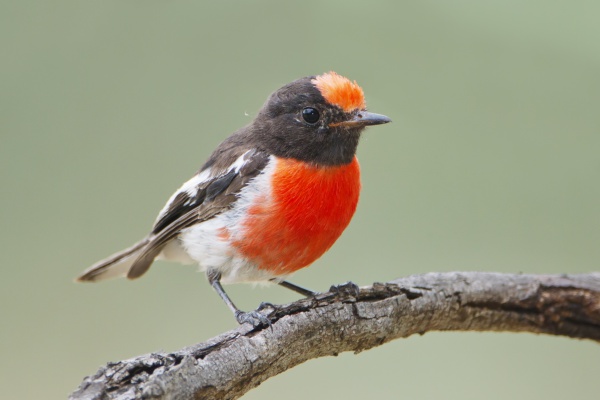Facts About Red-capped robin
The red-capped robin is a delightful small bird endemic to Australia, easily identified by its bright colors. It predominantly inhabits the drier parts of the country, especially scrublands and open woodlands. This diminutive bird measures between 10.5 and 12.5 centimeters in length. Male red-capped robins are particularly eye-catching with their vivid red caps and chests, while females exhibit a more understated grey-brown coloration.
Primarily ground feeders, these robins forage for insects and spiders. However, despite their extensive range, they are not very common in many areas due to human activities disrupting their natural habitats.
Taxonomically, the red-capped robin belongs to the songbird infraorder Passerida and resides within the Australian robin family, Petroicidae. Interestingly, despite their name, they are not related to European or American robins. There are no subspecies of the red-capped robin, although females from arid regions display slight variations in plumage. These birds are known by different names across various parts of Australia.
In terms of behavior, red-capped robins are often seen in pairs or small groups, especially during the breeding season when they become notably territorial. They produce a variety of calls and sometimes join mixed-species flocks with other small insectivorous birds. For nesting, they construct cup-shaped nests and can raise several broods in one breeding season, with both parents contributing to feeding the chicks.
Their diet primarily consists of insects and other arthropods, with a particular preference for beetles and ants. Although they mainly hunt on the ground, they are also adept at catching prey mid-air. Despite their agility, these robins face threats from predators such as feral cats and other birds that raid their nests.
